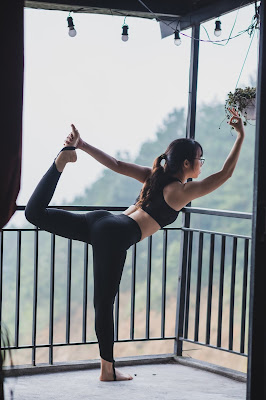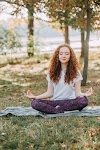2. As a beginner to learning Yoga, one should take the required rest between two practices by completely relaxing the en tire body for a few moments instead of performing the Yogic practices nonstop.
3. Yogic practices should be performed with ease and without strain. One should experience physical and mental pleasure out of them. For this, one should follow four cardinal principles, viz. (i) Slackening of effort (Prayatna Shaithilya), (ii) Differential/Partial Relaxation (Bhedatmak/Anshatmak Shithilata), (111) Normal/Natural Breathing (Naisargik Shwasana), and (iv) Fixation of mind on the breath (Pranadharana).
Prayatna Shaithilya : Minimising the expenditure of physical and mental energy for performing the Yogic practices means Prayatna Shaithilya, i.e. slackening of efforts consciously.
Bhedatmak or Anshatmak Shithilata : Using only those parts of the body that are required to attain and maintain an Asana and consciously relaxing all others to the maximum extent possible is called Bhedatmak/Anshatmak Shithilata, i.e. Differential/Partial Relaxation. This is explained in greater detail in Chapter 2.
Naisargik Shwasana : While performing an Asana, one should always breathe through the nose and keep breathing naturally from start to finish, i.e. while attaining the Asana, maintaining its final stage and while releasing it. However, in certain special practices like Bandhas, Mudras and Pranayamas, the breathing is to be regulated as prescribed
Pranadharana : In the final stage of an Asana, fixing the mind (awareness) on the breathing, i.e. counting the breaths or experiencing the soft touch of the incoming and outgoing breath on the septum of the nose, or feeling thetouch of the air on the palate, is called Pranadhavana 17 practising Pranadharana, an Asana becomes munte Table and easy and this helps in further cessation of effort Our complex mind is enriched by being made capable ok unt centration by the practice of Pranadharana and being, purified by Sakshibhavana (Passtve Observation). The on cepts of Pranadharana and Sakshibhavana as als the technique of practising them are explained in greater detall in Chapter 2.
4. All movements involved in Asanas should be slow, steady. continuous, controlled, rhythmic and graceful. In thes movements, one should consciously and scrupulously avoid jerks and pulls, unnecessary strain, forcible stretching or extreme contraction of muscles, deep breathing, or withholding of breath.
5. One should keep the eyes open till the final stage of an Asana is attained; one should then gently close them for the period that the final stage of the Asana is maintained and again open the eyes while releasing the posture. After adequate practice, one can keep the eyes semi-closed in the final stage of an Asana while keeping the mind on the breath, i.e. doing Pranadharana. As a general rule, one should turn the gaze along with the face, turning the pupils in the same direction. However, in certain Asanas, especially the meditative ones, it is necessary to fix the gaze between the eyebrows (Bhrumadhya Drishti) or on the tip of the nose (Nasagra Drishti).
6. While doing Yogabhyas, avoid any kind of competition as it is not conducive to the study of Yoga. One should not try to attain the ideal body pattern by applying force. The ultimate posture of the Asana which one can achieve depends upon various factors such as age, individual body structure, condition of body and mind, season, time of the day, etc. Hence, one should attain the posture according to one's capacity, i.e. the stage which one's body structure and tone of muscles permit. Also, one should maintain the final stage of any posture only as long as one can do sosteadily and deriving pleasure from it.
Persons who do not experience pleasure in attaining the ideal final stage of certain Asanas, etc. owing to any reasons like stiffness of the spinal column or joints, obesity, weakness, individual physical limitations, etc., should first prepare themselves well. This can be done by practising thoroughly the leading and preparatory practices suggested by one's Yoga teacher.
7. Adopt Yoga As a Way of Life. By regular and long practice of Yoga, according to one's capacity, one can acquire a body that is internally cleansed, stable, agile; have the nerves purified and improve one's efficiency, physical and mental equilibrium, allround development of personality, etc. All these gains result in making the life of the Yoga aspirant more healthy, successful, contented and pleasant. When Yoga is adopted as a way of life, the imprint of Yogic principles gets automatically registered in every aspect of the life of the Yoga Sadhaka, i.e. Yoga practiser.








0 Comments